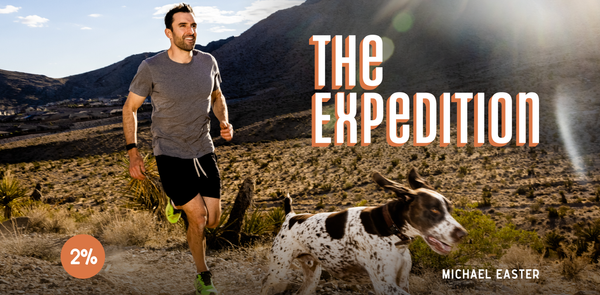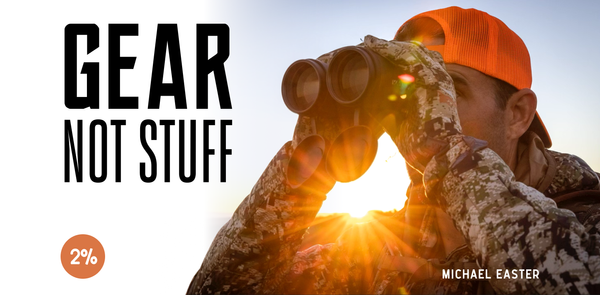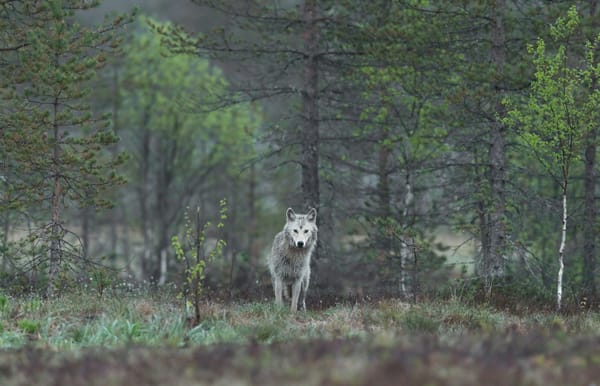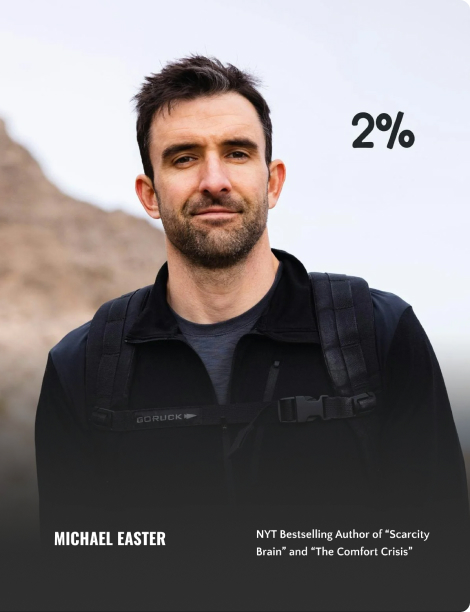Discover the Power of Mastery: It's NOT TOO LATE to Start
Why you can—and should—do hard things at any age.
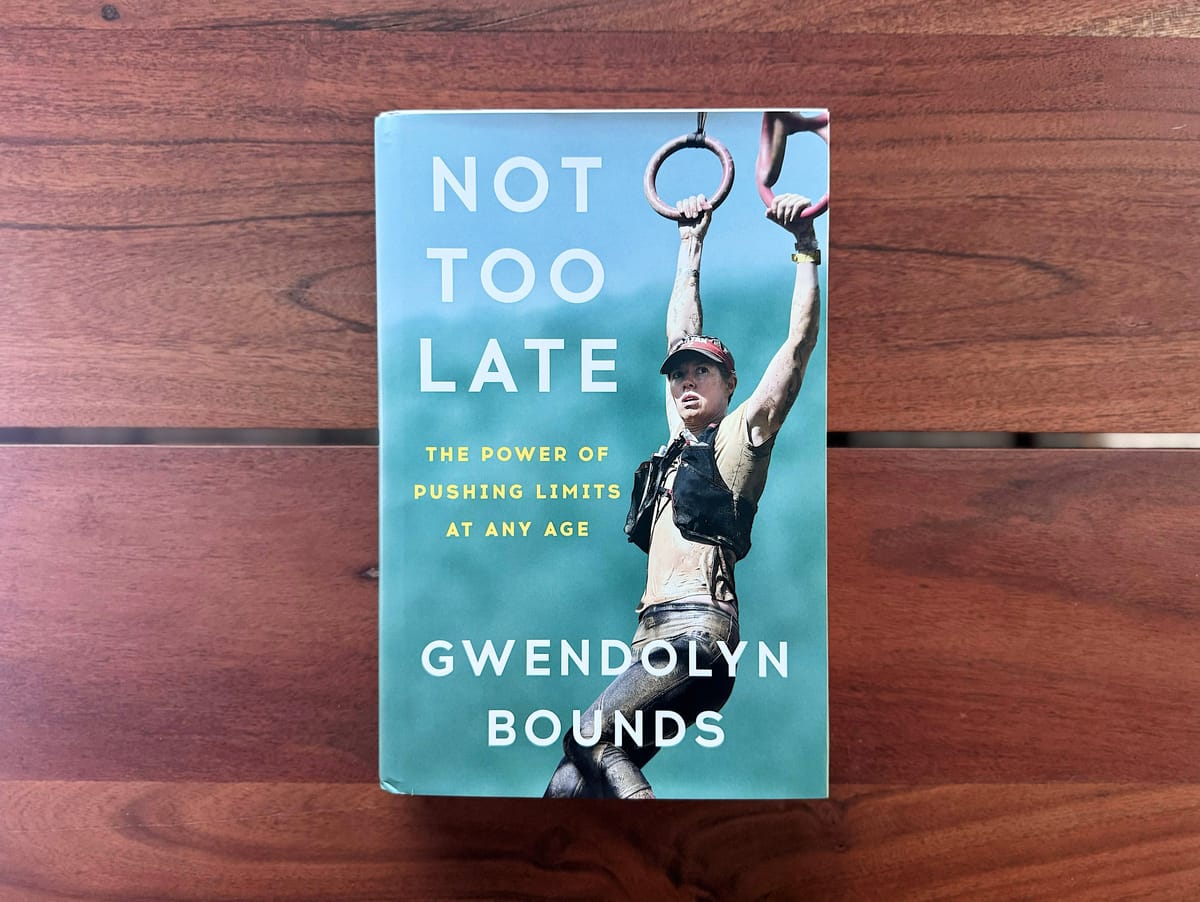
Post Summary
- We are a culture awash in hacks to optimize our way to wellness.
- But the data shows quick fixes aren't working—we’re actually not getting happier or healthier.
- Taking the hard road of mastering something new and difficult—no matter your age—is more likely to improve your health and happiness. It can even add years to your life.
- This is core of the 2% philosophy and at the center of a fantastic new book I recommend, called NOT TOO LATE.
- The book's author, Gwendolyn Bounds, went from a desk-bound exec glued to her computer to a competitive obstacle course racer starting in her late 40s. And she got good at it. Very good, in fact.
- In today's post, she explains why we should all strive to try new, challenging things—and get really good at them. It's especially important for people over 40.
Housekeeping
- This post, like all Monday posts, is free to all subscribers.
- Become a Member if you want full access to the upcoming posts on Wednesday and Friday—which cover aging and muscle and the best ideas I found this month.
Podcast Version
Gwendolyn reads her part of today's episode.
The post
Today's 2% post is from Gwendolyn Bounds, a 2-Percenter who's become a good friend.
Gwendolyn has a hell of a story. She was a reporter and editor at The Wall Street Journal for nearly two decades and then a high-power media executive. Great career trajectory.
But complacency sat in. Climbing the career ladder only gets you so high on the larger mountain of life.
So she took up obstacle racing at 46. For real—she went from a life of sitting and screens to an age group gold medalist in the sport. And it totally reinvigorated her life, health, and mindset.
Her story and fantastic book, NOT TOO LATE, remind us that living well is about exploring the edges. Trying new things and being OK with looking and feeling totally awkward along the way.
The book explores the science and soul of taking on challenges no matter your starting point. I invited her to share some of her story and three lessons she learned along the way. I also suggest you read her new book, NOT TOO LATE, which is out on Tuesday. If you pre-order it today, you’ll get a special bonus.
Now here’s the post from Gwendolyn. Enjoy.
//
Hey fellow 2-Percenters. I learned about the power of “firsts” while attempting to escape handcuffs at Michael's Don’t Die retreat recently. But, more on that in a bit.
Five years ago I was standing atop a frigid mountain in Lake Tahoe while about to submerge myself—with all my gear and clothing—into a lake.
This is when I realized hacks and quick fixes can’t cut it. At least when it comes to health and wellbeing.
We were roughly five miles into the 21K Spartan Race world championship for obstacle course racing—a sport combining endurance running with military-style obstacles such as scaling ropes and walls and carrying heavy sandbags. A short, cold swim was among the challenges that day.
There was no 5-minute workout, magic pill or optimization tool that would have prepared me to make it through that swim and the final eight miles of obstacles.
I was 48 and still a newcomer to the world of competitive sports. Having grown up a gangly kid last-picked for sports teams, my identity was tied up in stringing words together as a journalist and author.
“Athlete” was nowhere among the descriptors family and friends used for me.
But a wakeup call two years prior at a boozy dinner party (details in the book) had ripped me out of my midlife cycle of sameness, and here I was a middle-aged media executive facing the real possibility of hypothermia and failure.
Not going home with a “Did Not Finish” (DNF) hinged instead on the enduring work I’d put in to be standing there:
- The hundreds of mornings crawling out of bed before dawn to train before commuting more than an hour to the office.
- The humility of learning to climb a 17-foot rope and falling, over and over, until one day – I didn’t.
- The discipline of not eating what I wanted, when I wanted, and saying no to the second (and increasingly, first) glass of wine.
- Balancing it all with life’s other duties: a demanding job, marriage, aging parents, house chores, and health curveballs.
The 2% community understands the power of doing hard things. (We take the stairs.)
We also understand that we can't do something challenging just once and expect the benefits to last forever. Evolving research now indicates the importance of sticking with challenges and pursuing the long road of “mastery"—getting really good at something—even if we never reach the level of expert.
My path to obstacle course racing mastery improved my health, fitness, and mindset more than I could have ever imagined.
My new book, NOT TOO LATE, explores how we can all strive for mastery at any age at anything we want. Whether you're 18 or 80—pick a sport, activity, hobby, anything. You can make real progress toward mastery. And the benefits will change your life.
Here's how to start and what I learned along the way.
Build a will to live and add years to your life by finding "firsts"
Here’s a number I like, a lot: 7.5
People who have a positive perception of aging live 7.5 years longer, on average, than those who don’t.
Translation: If you're cool with aging, it'll be cool to you and you'll live longer.
That’s according to Becca Levy, an epidemiology professor at Yale. One factor thought to fuel this longer lifespan is a “will to live,” which can include pastimes that excite and push us.
Yet as many people age, the will to live dies. Inertia sets in. We do the same old things and we start running short on “firsts.”
In fact, we often shy away from doing new things and finding "firsts." For example, throwing a baseball for the first time. Standing up on a surfboard. Watching our fingers climb an octave on a keyboard. Casting a fishing rod.
We get trapped in a “cycle of sameness." Same work routine. Same friends. Same restaurants. Same pastimes.
We lean into our competencies, which can lead to complacency. Breaking the cycle requires going through discomfort as we force our brains to engage differently.
The case for breaking the cycle of sameness
We often think we fall off later in life—that is, that we get worse at everything. But strong research reveals otherwise.
The Seattle Longitudinal Study, started in 1956, bills itself as one of the most extensive psychological research studies of how we develop and change cognitively throughout adulthood. A few of its findings:
- We actually tend to gain in our abilities into early midlife and then remain stable even until our sixties.
- Some abilities, such as word skills, may increase into our 60s and beyond, particularly for women, while others, such as spatial abilities—think assembling furniture or reading a map—hold up into our 80s for men.
- The takeaway: There's a lot of opportunity for later-in-life learning and journeys of mastery.
The science and benefits of mastery
Let’s geek out for a moment. Underpinning our ability to keep adding new talents is a fatty protein substance called myelin.
Think of myelin as insulation. When we learn a skill, our nerve fibers carry small electrical impulses. Myelin wraps around those fibers and keeps the impulses from leaking out.
Myelin is so important, it’s a key character in a book called “The Talent Code.” While myelin grows most rapidly in childhood, we retain the ability to myelinate throughout life, according to the author Dan Coyle.
Which means we can continue to learn, unlearn and relearn all sorts of things. But it takes repeat, deliberate practice—striving for mastery.
The problem is that we're now awash in a marketplace of shortcuts (those 5-minute workouts, magic pills and powders) promising to make us healthier. An Internet search for “happiness hacks” yields an infinite scroll of posts.
Yet the 2024 World Happiness Report shows the United States fell out of the top twenty for the first time since the report launched.
- Happiness is dropping most sharply among younger people, who are likely some of the biggest consumers of the hack culture.
Meanwhile, Americans live shorter lives and experience more injuries and illnesses than people in other high-income countries.
- We have among the highest suicide rates, and for decades have clocked the highest obesity rate among our peer set in other countries.
Hacks are simply shortcuts rebranded. By their definition, they're designed to reduce work.
That’s not bad, say, when you’re doing laundry.
But it’s far less effective when it comes to the pillars of our health and wellbeing: strength, cardiovascular fitness, nutrition, emotional fortitude and resilience.
Why mastery builds the "will to live"
You can't hack your way to the most important things in life. They require long-term commitment to build and maintain.
For example, the same amount of muscle mass it might take six months to build can be lost in a single week of sedentary bed rest. Muscle—and all the other great things in life—are a use-it-or-lose-it proposition.
Mastering something new also takes commitment. How much commitment? At least 10,000 hours to become an expert by one much-discussed count.
That’s a long time. But that long, hard path is why mastery can make us so enduringly happy.
Hacks are short-lived—mastery isn't. Instead of the short-lived dopamine hit of quick wins, trying to master something gives us something to aspire to that is always looming on the horizon.
Put in philosophical terms, the road of mastery is in some ways “atelic.” Meaning, it’s never-ending.
Unlike "telic" activities that have an end and bring pleasure – eating a meal, going on vacation – with atelic activities, you can’t extinguish the source of joy from your life by completing them. (H/T to MIT philosophy professor Kieran Setiya.)
For me, this idea of a “never-finished” line fuels a will to live – and is the greatest gift of my six-year odyssey to master obstacle course racing.
What I learned pursuing mastery
I estimate 4,000 hours have now gone into my mastery journey. After 50 competitions (including that Lake Tahoe race), I’m a long way from the scrawny little girl who cowered behind her best friend in dodgeball. And without a doubt, I'm happier.
Plus, by some key measures, I’m healthier. My body has been measured in labs; my respiratory fitness and lean mass have improved at an age when those things should be declining.
I’m actually almost supermedium. :) (Michael's note: Gwendolyn is definitely supermedium!)
This didn't happen through hacks. It took consistent daily movement in pursuit of mastery. Committing, training even when I didn't feel like it, saying no to comfort often, and embracing challenges along the way.
Three ways to achieve mastery
1) Listen to intrinsic motivation
Motivation from external or “extrinsic” factors—money, a promotion, a medal—is fleeting.
You have to go inward. Find something that excites you so much that it makes you stop scrolling on social media, turn off Netflix and wake up 45 minutes earlier.
When I ultimately finished the Lake Tahoe race, it was 100% due to the internal motivation of redeeming that weak, childhood version of myself.
2) Make it easy to get started
You don’t need fancy gear or all the information to get going.
Michael wrote recently about the power of getting lost. It’s also OK to just dive in and get lost in a new pastime.
Don’t worry about looking dumb. I looked like a wounded animal as I bear-crawled around my yard in the early days. My neighbors gawked.
But I was doing something. You can do something too.
As the Greek Stoic philosopher Epictetus put it: if you want to improve “be content to be thought foolish and stupid.”
3) Locate “edges and equalizers”
What attributes do you possess (grit, humor, bravery) that are your superpowers?
I had to find my own superpowers to stick with obstacle course racing and succeed.
For example, I’m not a fast runner, but I am good at gutting it out when things hurt.
I also can’t rely on a 25-year-old body to perform well, but I do know how to collect information. So I’ve turned to intel on weather, hydration, terrain, and sleep to level the playing field.
Back to those handcuffs at the 2% Don't Die retreat ...
Having a former CIA agent, Mike Moreno, put a bag over my head and walk me, handcuffed, into a small building in a simulated hostage situation—that, fortunately, was a “first” for me. So was shooting a handgun.
But those were among the many new scenarios that pushed my limits with other 2-Percenters at Michael’s inaugural Don't Die retreat. Now I’ve got new friends and more learning on the horizon to improve these skills.
Thanks for reading. Try some new hard things. Stick with a couple and work to master them.
You can reach me at: gwendolynbounds.com.
//
Back to Michael ...
Have fun, don't die, do hard things and get really good at them (and read NOT TOO LATE!).
-Michael
Sponsored by GORUCK
When I decided to accept sponsorships for this newsletter, GORUCK was a natural fit. Not only is the company's story included in The Comfort Crisis, but I've been using GORUCK's gear since the brand was founded. Seriously. They've been around ~12 years and I still regularly use a pack of theirs that is 11 years old. Their gear is made in the USA by former Special Forces soldiers. They make my favorite rucking setup: A Rucker 4.0 and Ruck Plate.
**Use discount code EASTER for 10% off**
Sponsored by Momentous
Momentous made me feel good about supplements again. Over 150 professional and collegiate sports teams and the US Military trust their products, thanks to the company’s rigorous science and testing. I don’t have the time or desire to cook perfectly balanced meals that give me all the necessary nutrients and protein I need (let’s face it, few of us do!). So I use their collagen in the morning; Recovery protein during hard workouts; essential multivitamin to cover my bases; creatine because it’s associated with all sorts of great things; and Fuel on my longest endurance workouts on 100+ degree days here in the desert (because Rule 2: Don’t die). And I also love (love!) that Momentous is researching and developing women-specific performance supplements.
**Use discount code EASTER for 15% off.**
Sponsored by Maui Nui Venison
Axis Deer provides the healthiest meat on the planet. That's according to researchers at Utah State, who compared axis deer meat to beef and found that it contains 1 to 64 times more antioxidants, vitamins, minerals, and healthy fats. It also contains 53% more protein per calorie than beef. Equally important is that Maui Nui solves ethical considerations around meat. Axis Deer are an invasive species ravaging the Hawaiian island of Maui, and Maui Nui harvests the deer at night in a stress-free way, improving the ecosystem.
My picks: I like it and eat everything from Maui Nui, but the 90/10 Organ Blend is particularly great for people looking to get more micronutrients in their diet, and the Jerky Sticks are my go-to travel snack.
**Use discount code EASTER for 20% off.**

